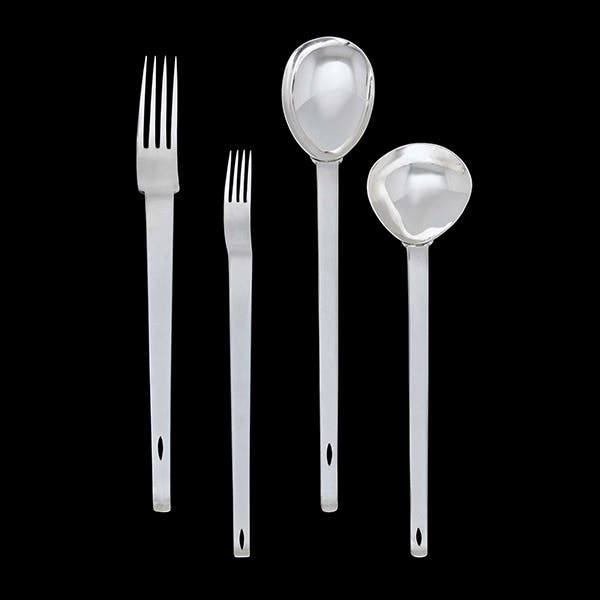10 reasons you should know Viktor Schreckengost
Viktor Schreckengost is one of those people who lived his life to the fullest, and because of that, the rest of us are able to enjoy life even more. Learn more in this ’10 Reasons’ column by Print Editor Karen Knapstein.
By Karen Knapstein
It's fascinating what you'll find when you look into the people who have helped to shape American culture. Viktor Schreckengost is one of those people. It's likely even if you aren't familiar with his name you are familiar with his inventions. Or the invention he inspired. Here are 10 fascinating facts about Viktor Schreckengost....
Viktor's Vision
1 Viktor Schreckengost was born in Sebring, Ohio, in 1906. He learned clay sculpting from his father, a commercial potter. Schreckengost died in Florida in 2008 at the age of 101. In 2005, Crain’s Cleveland Business reported the designer’s impact on the United States economy at more than $200 billion.
2 In 1933, Viktor Schrekengost, known as “The American DaVinci,” established the first modern industrial design department in the United States at the Cleveland Institute of Art (CIA) – where he taught for 70 years. As a teacher, he led his students “through the process of self-discovery.”
3 Schreckengost was the first artist from Cleveland to show his work at the Metropolitan Museum of Art. Schreckengost said his goal was always been “to make products that are both beautiful and affordable, and to make an emotional connection with the customer.”
Inspiring Revolutionary Inventors
4 Viktor Schreckengost was prolific in his design and influence. Former students credit Schreckengost with elevating ceramics to a fine art form. Also elevating the sense of quality in your life through design, making everyday objects more pleasurable to use. Many of his students went on to illustrious careers of their own - some in the automobile industry. For example, Joseph Oros, who graduated from the Cleveland Institute of Art in 1939. He lead the team that created the 1965 Ford Mustang.
5 Early in the 1930s, on behalf of a “special customer,” the Brownell-Lambertson Gallery in New York City placed an order with Cowan Pottery for a punchbowl with a “New Yorkish” style. According to an article on www.cleveland.com, “Schreckengost pulled the order out of a job jar at Cowan, and went to work on what the dealer had said was a special punch bowl ordered by a New York housewife.” Schreckengost’s design was inspired by the energy of New Year’s Eve in New York’s Times Square. He was able to capture the feel of the neon lights, the fun and excitement at the dance halls, and glasses of contraband champagne, among other details.
The “special” customer turned out to be Eleanor Roosevelt, and she adored her punchbowl with black and vibrant blue design so much that she ordered two more. Later, the Jazz bowl went into limited production. Selling for $50 apiece during the Great Depression, fewer than 50 bowls were made. One of these production bowls, sold for more than $250,000 at Sotheby’s in 2004.
Eye on Practicality
6 Questions foremost in Schreckengost’s mind when planning a design were: “Who will use it?” and “How will it be used?” For example, before Schreckengost’s innovations in pedal vehicle design, most people couldn’t afford the ride-in toys. However, in the early 1940s, Schreckengost made pedal cars much less expensive by designing the car body, made from sheet metal, to act as its own frame, rather than attaching parts to a frame as regular automobiles – making them affordable for the middle class. Also, he designed his pedal airplane so it would fit through a standard door frame so children could ride inside as well as outside.
7 At age 37, Viktor Schreckengost enlisted in the U.S. Navy during World War II to help the Allies. He went on to receive the Secretary of Navy’s commendation for developing a system for detecting radar. After the war, he helped develop prosthetic limbs. He also joined the Naval Reserves, and when he retired, he held the rank of Captain. (His Officer’s Naval Uniform, circa 1943, sold for $500 through Heritage Auctions in May 2016.)
8 After graduating from the CIA in 1929, Schreckengost was awarded a partial scholarship to study ceramics in Vienna, Austria. To supplement his scholarship, Schreckengost played saxophone with several groups and became fairly well known as a jazz saxophonist.
World's Fair Ties
9 By the end of the 1930s, Schreckengost was the lead designer for the Murray Ohio Company, a name well-known in bicycle circles. His first bicycle, the “Mercury,” is among the displays of the 1939 World’s Fair in New York. In the 1960s, Schreckengost invented the “banana” seat and the “sissy bar” for bicycles to keep stunt-practicing kids from falling off and injuring themselves.
10 A sit for a drink: According to John Spirk, an industrial designer who is one of Schreckengost’s former students at the Cleveland Institute of Art, as quoted in an article in Cleveland magazine, when developing the “Beverly Hills” lawn chair at the Murray-Ohio Company, Schreckengost molded a prototype of a chair out of plastocene modeling clay covered in plastic and asked each employee to sit on it. “It was a chair designed for bottoms, by bottoms,” the article says. “A day’s worth of body warmth — Spirk estimates hundreds of people sat there — softened the clay into a seat custom-designed for comfort.” (Each employee who sat in the chair received a token for a free drink from the Murray Company’s commissary.)
Sources: Success By Design: The Schreckenghost Legacy; www.cmgww.com; nytimes.com; www.cleveland.com (“Cowan Pottery’s legacy as a Cleveland institution and an art form”; clevelandhistorical.org; “Cowan Pottery and the Cleveland School,” by Mark Bassett and Victoria Naumann (Schiffer Publishing, 1997).








